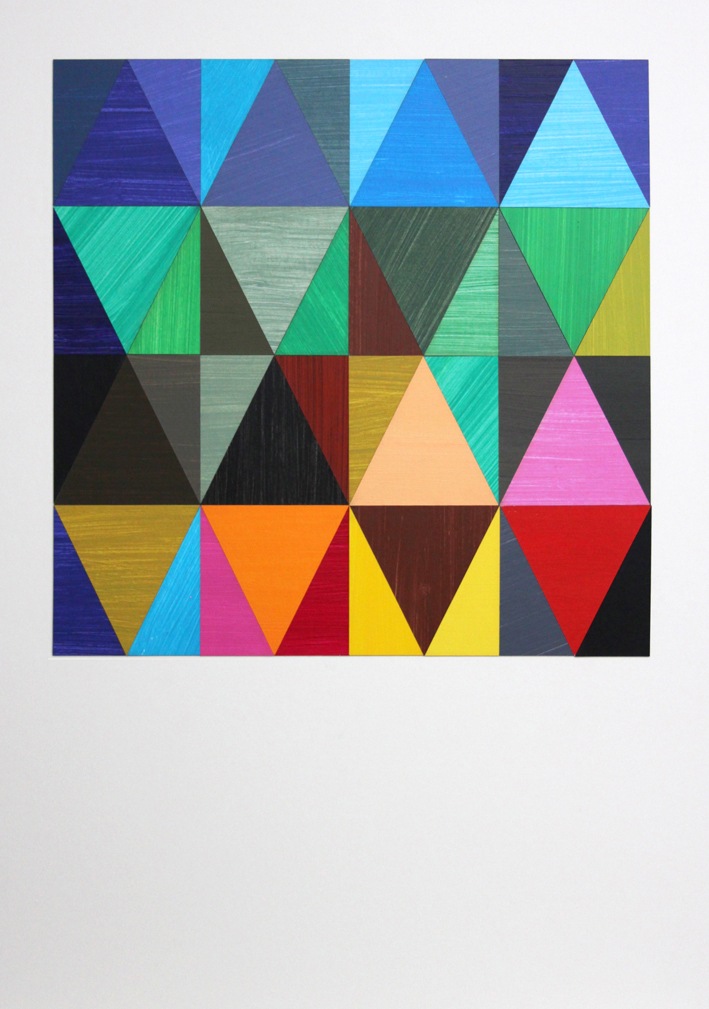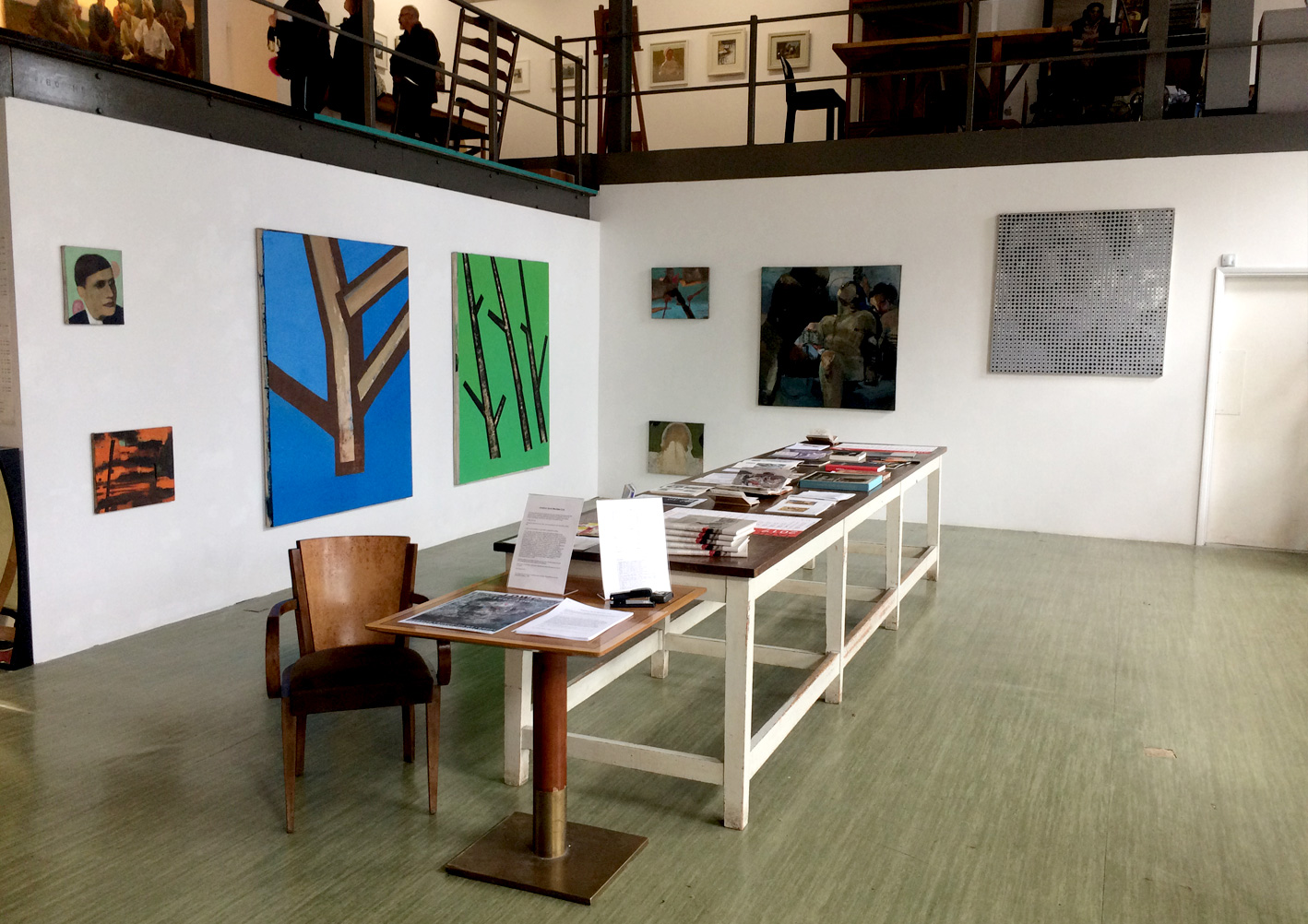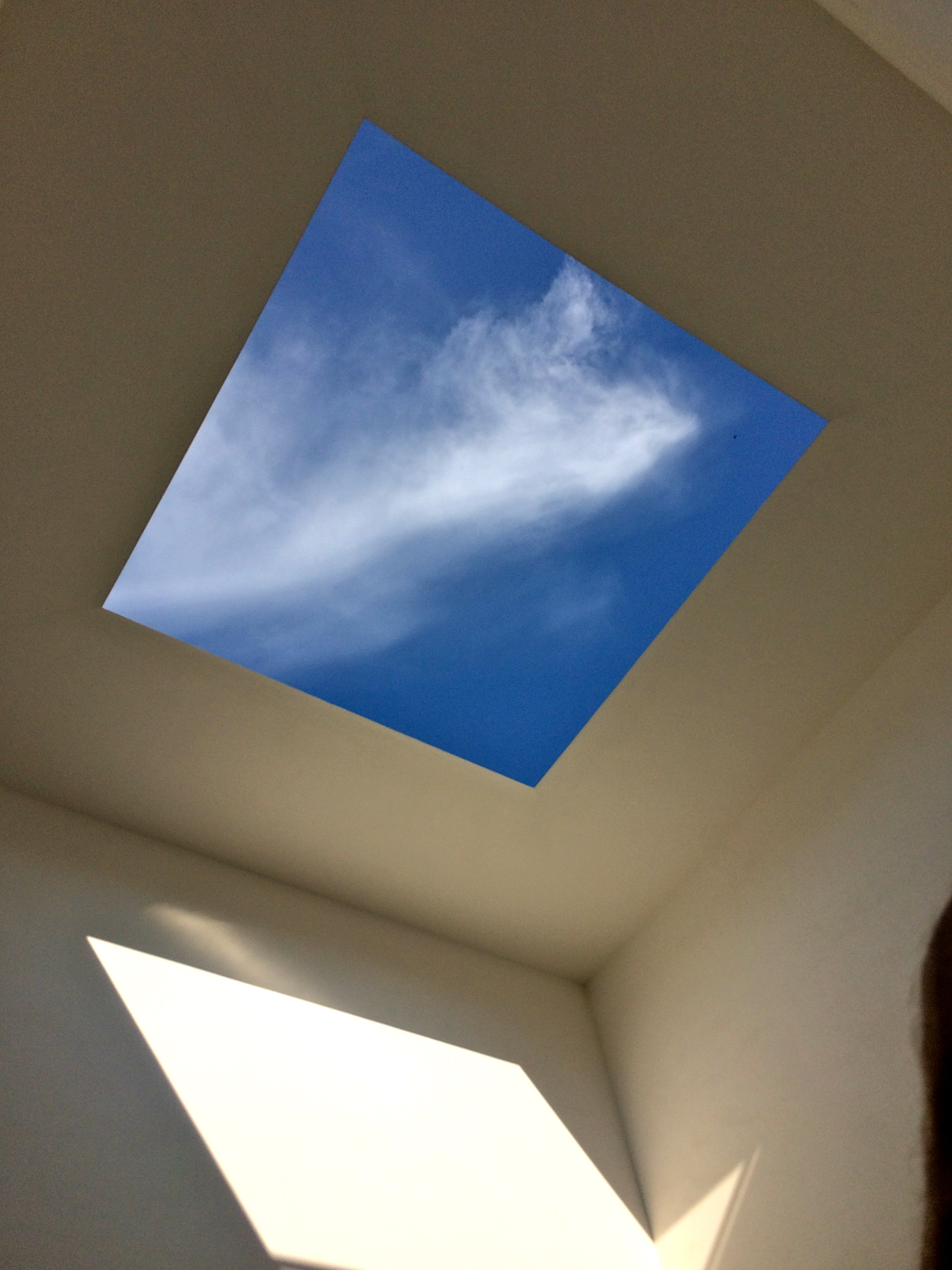Hard at work getting ready for this exhibition. You are very welcome to join me for the Preview on Friday 12th January between 6-8pm. There will be music to listen to, drinks available to drink and oh yes - paintings to see
Editions 17
Anthropocene is a collage made of hand painted and laser cut triangles. I decided to complete an edition of 20 for the editions Christmas exhibition at Project78 gallery, St Leonards on sea. Each one is a unique composition from a limited range of coloured components. You can see them and even purchase one if you wish at Project78
Top Twenty (everything is wrong)
Coloured polystyrene resins and perspex on board, recently completed, size: 122 x 89.5 x 5.5 cm
Top Twenty (everything is wrong) is a painting of a wordsearch of the world's top 20 Billionaires according to Forbes list. I made up the wordsearch using an online tool and then added to it. This then became my sketch for the painting. The painting itself appears to be an enlarged copy but it is actually made from hand cast and laser cut letters incorporated into a poured and painted white polystyrene field.
The painting reflects and questions our fascination with status and success.
Although it was completed and visible in my studio at the recent Open Studios weekend, I think that it now needs a more public airing - I'm looking into it.
Phoenix Brighton Open Studios
Phoenix is opening its doors again during the Brighton Festival. I'm tidying up the studio in readiness and its involving a lot of A to B - ing
There's a preview event on Friday 12th May, 6-9pm, to which you are invited. I'll be there all weekend, Saturday & Sunday 13/14th May, 11-5pm too so it would be great to see you if you're in the neighbourhood.
ONCA Perspectives 2012-2017 2-9 March 2017
Join me 6-9pm on March 2nd to celebrate ONCA’s first five years and the unveiling of the new website, logo and gallery frontage.
This retrospective group exhibition looks at some of ONCA's greatest projects to date. Come and help ONCA imagine and shape the next chapter.
JDWC at the Kino Teatr St Leonards on Sea - Saturday 14 01 2017
This event marked the ten year anniversary since local Hastings artist Jonny Cole died January 2007, in Cambodia. A gathering to remember and celebrate Jon's life, his work as a painter and the inspiration that has become his legacy to many Hastings and St Leonards residents through his paintings and of course quite simply for the person he was.
The ground floor of the Gallery at Kino featured twenty of Jon's paintings spanning a short but prolific two decades.
During the course of the evening, the JDWC website was launched (jdwc.org) and visitors were also treated to five short films in the packed Kino cinema. The first two featured Jon at work in his studio at 12 Claremont in Hastings and also preparing for his final 'Coleshow' at Arch 1 Braybrooke Terrace.
Kenton Lowe (BlackShed Gallery, Robertsbridge) introduced 'Write Off' a film that documented a 2 week workshop with a group of local teenagers with Prader Willi syndrome which, as Tim Cole penned in his production notes for the evening … featured, 'the most brutal tool in the kit - the grinder meets the most dangerous object ever created - the car. Part autopsy, part challenge, partly the act of parting, the group concentrate on the task of dividing a car and forging friendships and new skills in the process'.
Local artist Kate Adams of Project Artworks introduced a film that featured Jon working with local children with profound and complex impairments and Brighton resident Tim Dunkerley introduced 'One stone to another' a result of a collaboration between staff and students from East Brighton College of Media and Arts (COMART), Downs View School, a team of multi-disciplinary artists put together by the education department of Glyndebourne Opera, (led by Stephen Langridge), and musicians from the Orchestra of the Age of Enlightenment.
The evening culminated on an inspirational note from Jon's dear friend and local art tutor Rod Harman and an anecdote from Jon's mother Linda of how Jon once motivated his art students by entering an empty life drawing class via the ceiling - shouting 'draw the legs' as he poked them through the hole in the plasterwork above them. Classic Jon!
In 1994 Jon wrote
'Painting has become my way in life. I have concentrated on this more than anything else'
In his review of JDWC at the Kino Teatr, local art critic Ron Skibbard wrote
'These paintings make little attempt to inspire with subliminal imagery but are concerned with language, the surface language of paint. He presents us with an image of Mohammed Ali or a tree or an image inspired from the Bible or a seemingly process driven abstraction, however in effect we are presented with a blank canvas, a space in or on which to act - to create. Here is a tree, here is a relic of Christianity that has shaped our culture ... here is nothing, nothing more than a painting. The paintings are flat and upfront, in your face with an emphasis on surface, however, the obsessive nature of the imagery and of the marks, coupled with the very pared down-ness of the paintings, intrigues, creating vast spaces that you can get lost in.
Jonathan believed passionately in painting and this is the overriding feeling one gets when confronted by this modest selection of his paintings'.
In his final year, Jon had been working on a picture of local BMX rider known affectionately as 'Boyley' He also drafted a proposal for a large mural of Boyle for a wall in Hastings town centre. The site that Jon had his eye on was adjacent to the pedestrianised area opposite what was the Street bar/Crypt. A copy of Jon's proposal is included. It is not known whether he actually sent it to Hastings Council.
RICHARD BOYLE MEMORIAL MURAL PROJECT
The annual BOYLE JAM is the inspiration.
A testament to a young man who died well before any of us would have wished; and a person who is well remembered by generations of people.
Out of such love and regard comes a clear indication of a need for inspired intervention, notably; Hasting’s first public owned mural.
‘The America Ground’ mural is both popular and commemorative. ‘The Cambridge Road’ mural will be a site for local respect and celebration. - on the entertainment corner, close to the old memorial site.
We feel this is an opportunity to take possession of a local project proposed by a practitioner from the arts community. - Jon Cole 2006
Surely now is the time to realise this proposal and a much more comprehensive look at the large body of work that Jon created.
The Chichu Art Museum
I have just returned from a trip to Japan, I intend to write about a few highlights. The first is a visit to a museum on Naoshima a small 'art' island, located in the Seto Inland Sea.
Chichu Garden
The Chichu art museum was designed by the architect Tadao Ando. It is a site that is concerned with rethinking the relationship between nature and people and is mostly underground. It houses a collection of Monet's water lily paintings which can be seen in a corner less white room. There are five paintings; Water-Lily Pond, Water-Lilies, Cluster of Grass, Water-Lilies, Water-Lily Pond, Water Lilies, Reflections of Weeping Willows. The natural light produces a whiteness that seemed very good at reducing reflections from the surface of the pictures that were housed behind glass. Obviously the paintings are lovely, I particularly noticed the reflections of the leaves and tree trunks on the surface of the water – Monet choosing white to represent reflected light. I felt a bit diminished in the reverential silence and special slippers – probably a good thing though.
I was most keen to see the three works by James Turrell however and they didn't disappoint. Afrum, a cube of light directed through glass from a small gap in the ceiling formed a floating cube of white light in the corner of a room. As you walk towards it you feel that you might enter the light box itself, just hovering there at chest height. Up close, the cube turns out to be an illusion as the crisp shadows around flatten it out onto the adjacent walls. It's a simple trick and its beautiful.
Open field is a huge rectangle of cool blue light that you step up towards. It feels like the approach you might take in a religious act, taking Holy Communion at St Barts, Brighton for instance. As you get closer, the blue picture becomes something you can actually immerse yourself in.
You can actually walk all the way in.
The intense blueness of it.
You are in the painting, inside the work.
It's good, very good.
As you turn around you see how it's all done but the sensation of the complementary orange opposite was almost better than the blue. This work was aided by overstimulating my blue sensitive retinal cones and when I had turned towards ordinary white light, signals from the newly stimulated, red and green photo-receptors overwhelmed the signal from the smaller number of blue receptors that my brain had accommodated for. It's interesting that most humans have a much smaller number of blue sensitive photo receptors than green or red but the total sensitivity to blue is much greater – they also tend to be located in the peripheral parts of the retina, unlike the red and green which are clustered around the fovea. I wonder if this is why Turrell chose blue for this work? I wonder what it would be like if it was done with red or green?
The third work is called Open Sky which is part of Turrell's Open Space series.
Entering a purpose built room you can sit or lie on the floor and look up into a framed square of open sky. On the day of my visit it was a clear blue sky with a few whispy clouds every now and then. The whiteness of the clouds accentuating the blueness of the sky accentuated by the square frame. It took me back to childhood days lying on my back on the freshly cut green grass of Lee-on-the-Solent rec after a summer morning of football – football with jumpers for goalposts. It may be unfortunate that enclosing or framing something helps us see it better but in this case the defined square of open sky helped intensify my perception of the beauty of light.
There is also a monumental space featuring an installation by Walter De Maria which was a real surprise to see.
The museum is a work in its own right and whilst it is mostly underground, the concrete rooms and corridors are lit by natural light that originates from slits in the side or from high above.
I would have liked to have included more photographs but taking photos was not allowed. Actually whilst I felt aggrieved initially it means that you are not surrounded by people with their camera's and phones out and it keeps your mind free of thinking about documenting everything you see – an urge I need to suppress more often.
Ultra-Peripheral (Lovely Lolly 2)
I have just completed a new picture which Bernard Mills has kindly photographed (along with other recent work)
Ultra-Peripheral (Lovely Lolly 2) Coloured Polystyrene resins on board 61 x 122 x 5.5cm
Photograph by Bernard Mills



















